RIVER REACH SCALE
The overarching goal of my reach scale research is to understand the hydrodynamic, hyporheic, and ecologic responses to in-stream engineering designs.
Related publications:
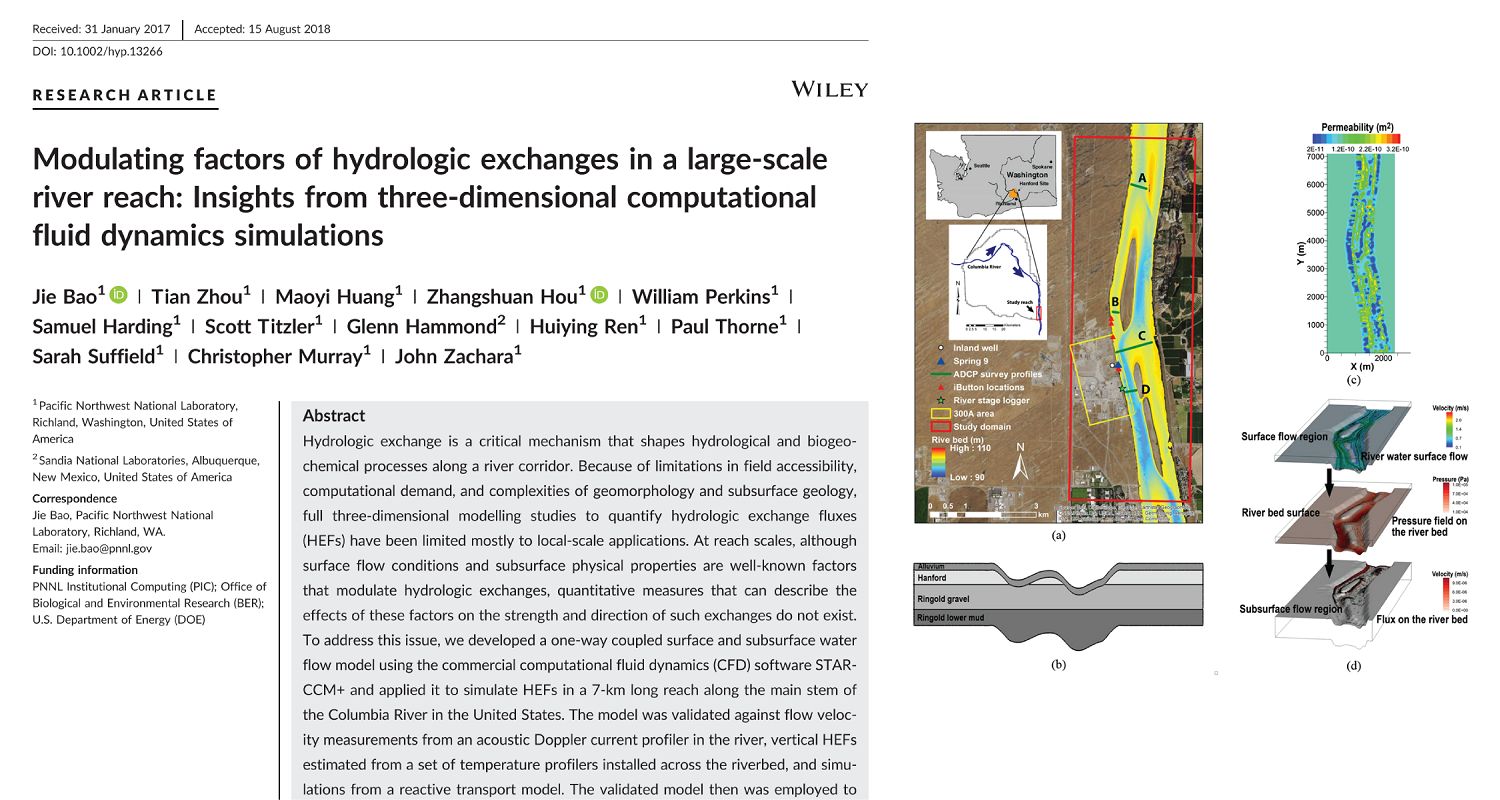 In this paper we use CFD model to test which subsurface property has the dominant control on hydrologic exchange.
In this paper we use CFD model to test which subsurface property has the dominant control on hydrologic exchange.
Bao, J., T. Zhou,, M. Huang, Z. Hou, W. Perkins, S. Harding, S. Titzler, G. Hammond, H. Ren, P. Thorne, S. Suffield, C. Murray, J. Zachara 2018 Modulating factors of hydrologic exchanges in a large‐scale river reach: Insights from three‐dimensional computational fluid dynamics simulations Hydrological Processes
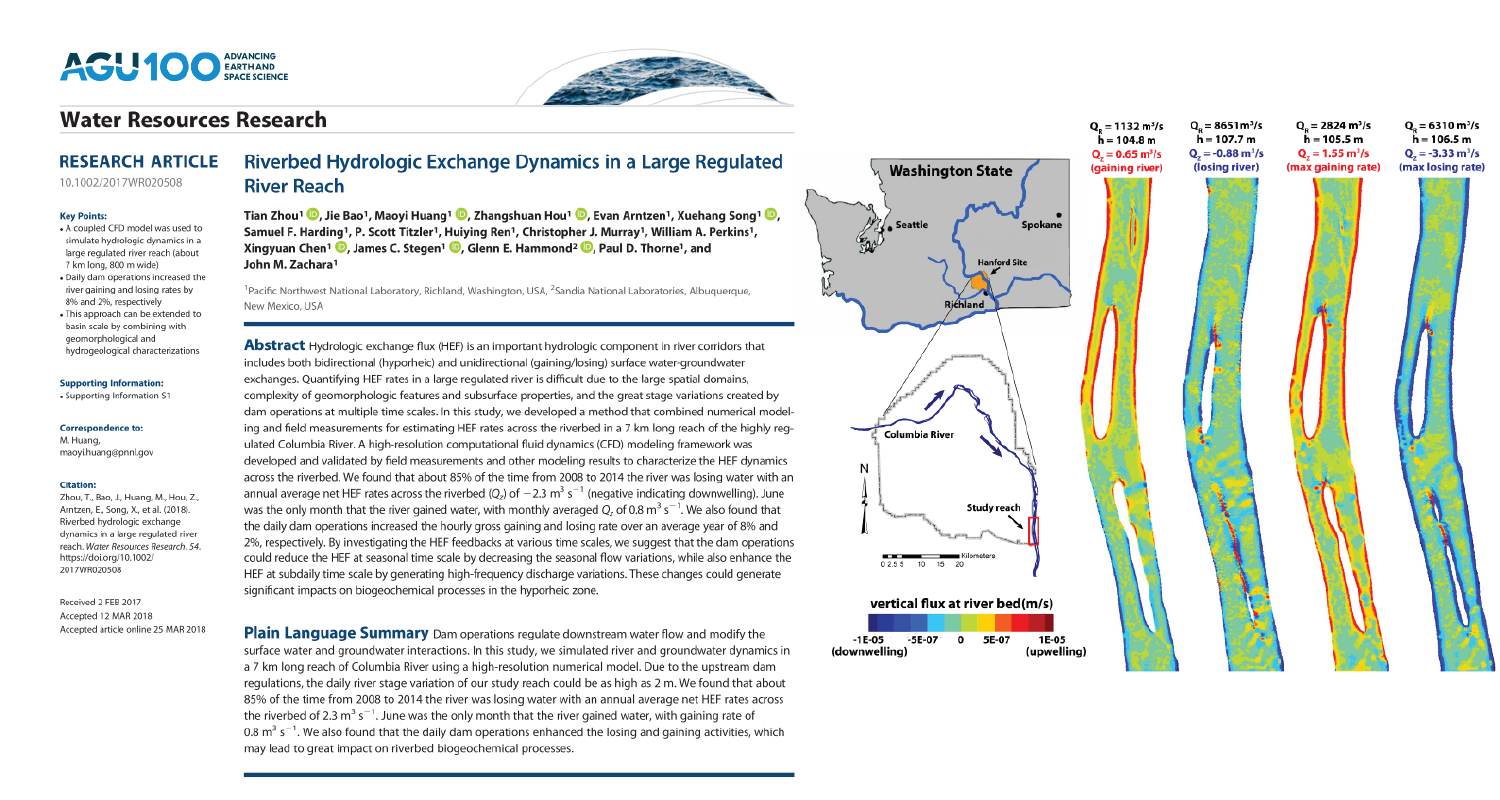 In this paper we use CFD model to simulate a 7km reach in Columbia river and establish relationships between flow condition, inland water table level, and hyporheic flux rate
In this paper we use CFD model to simulate a 7km reach in Columbia river and establish relationships between flow condition, inland water table level, and hyporheic flux rate
Zhou, T., J. Bao, M. Huang, Z. Hou, E. Arntzen, S. Harding, S. Titzler, H. Ren, C. Murray, W. Perkins, X. Chen, J. Stegen, G. Hammond, P. Thorne, J. Zachara 2018 Quantifying hyporheic exchange dynamics in a highly regulated large river reach. Water Resources Research
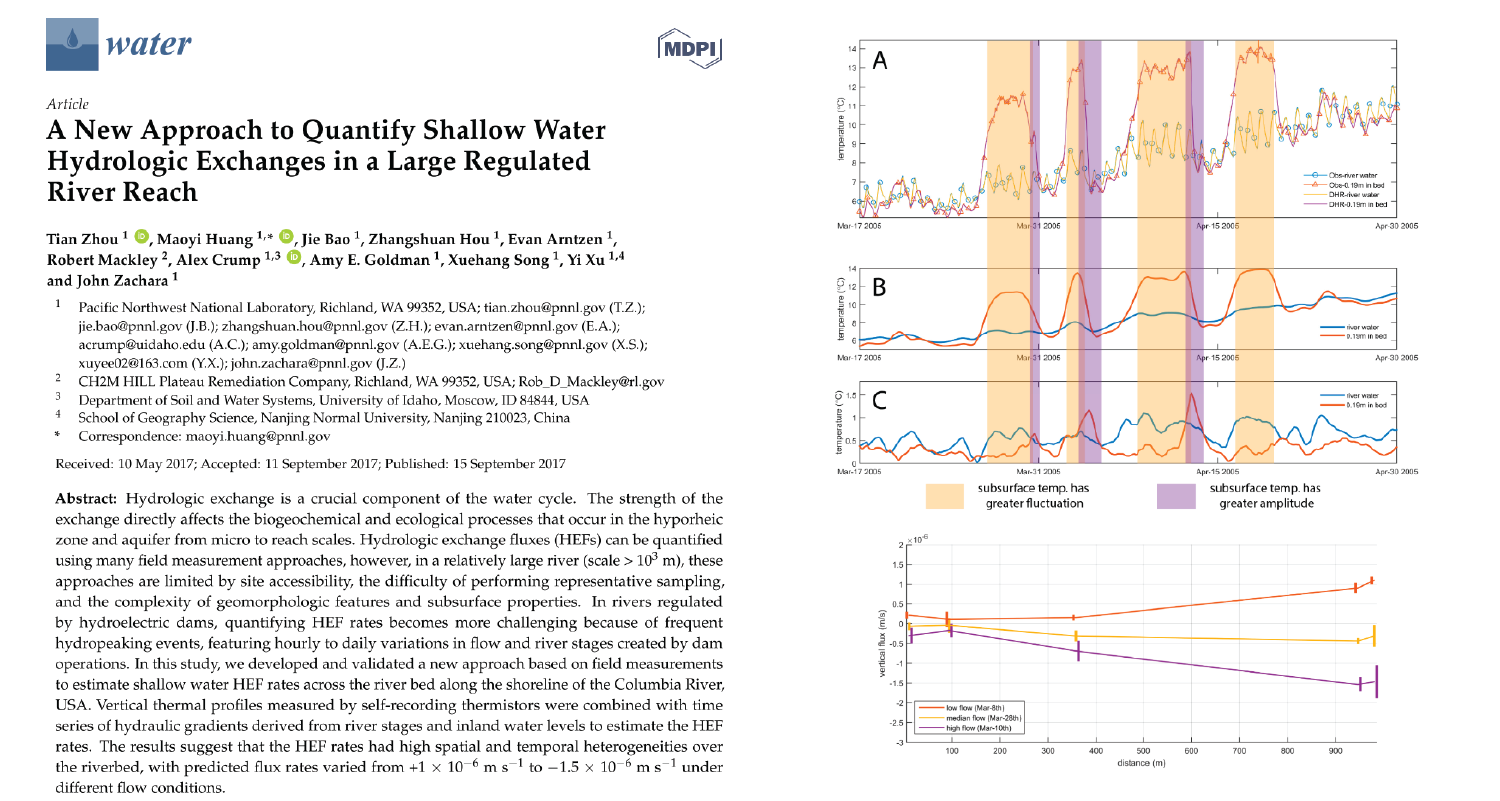 In this paper we developed a new approach to quantify hyporheic flux rate based on point temperature signals
In this paper we developed a new approach to quantify hyporheic flux rate based on point temperature signals
Zhou, T., M. Huang, J. Bao, Z. Hou, E. Arntzen, R. Mackley, A. Crump, A. Goldman, X. Song, Y. Xu, J. Zachara 2017 A new approach to quantify shallow water hyporheic exchanges in a large regulated river reach. Water
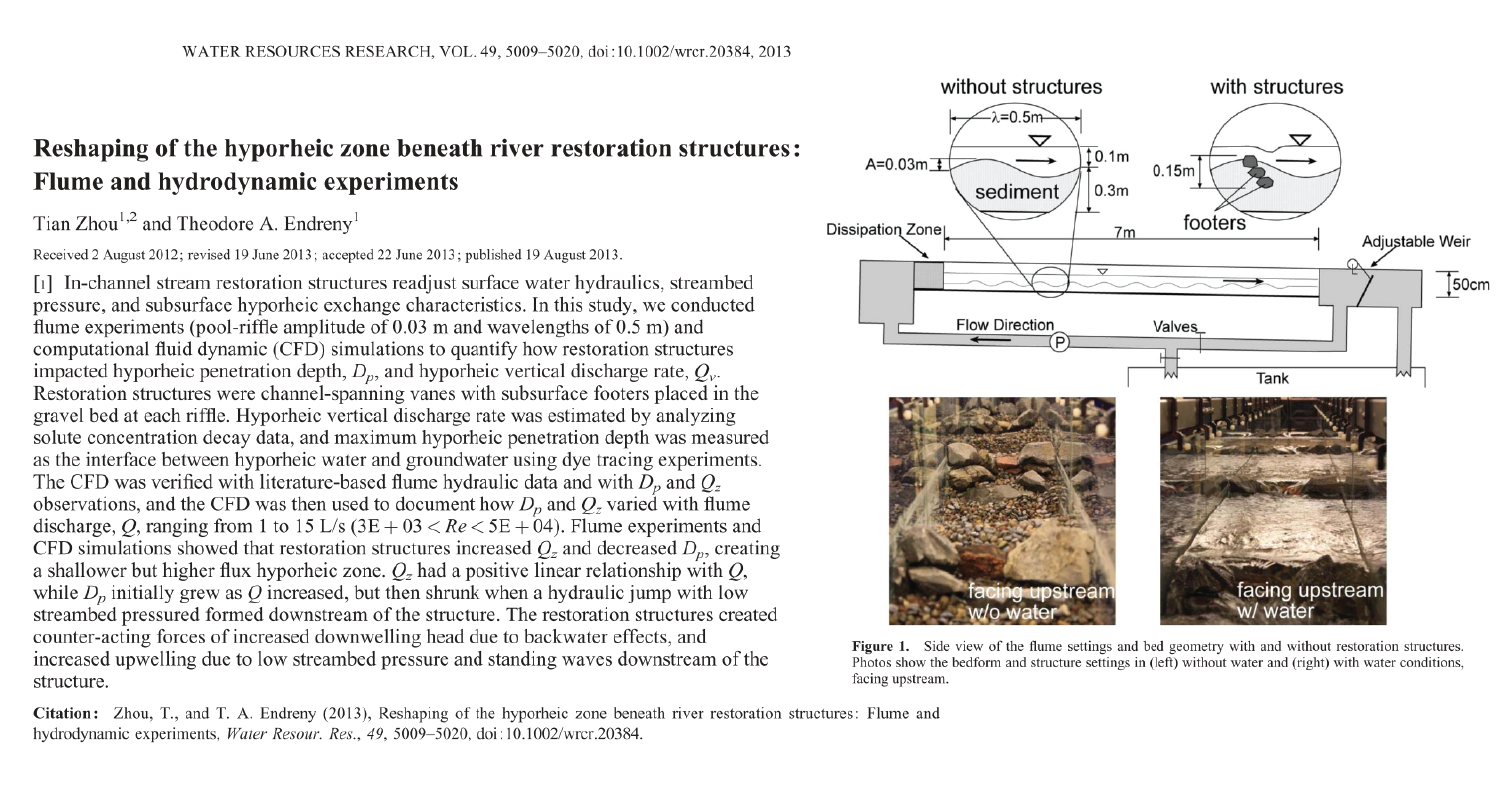 This paper characterised the hyporhic exchange responses to restoration structures based on both flume experiments and model simulations.
This paper characterised the hyporhic exchange responses to restoration structures based on both flume experiments and model simulations.
Zhou, T. and T. Endreny, 2013: Reshaping of the hyporheic zone beneath river restoration structures: flume and hydrodynamic experiments. Water Resources Research
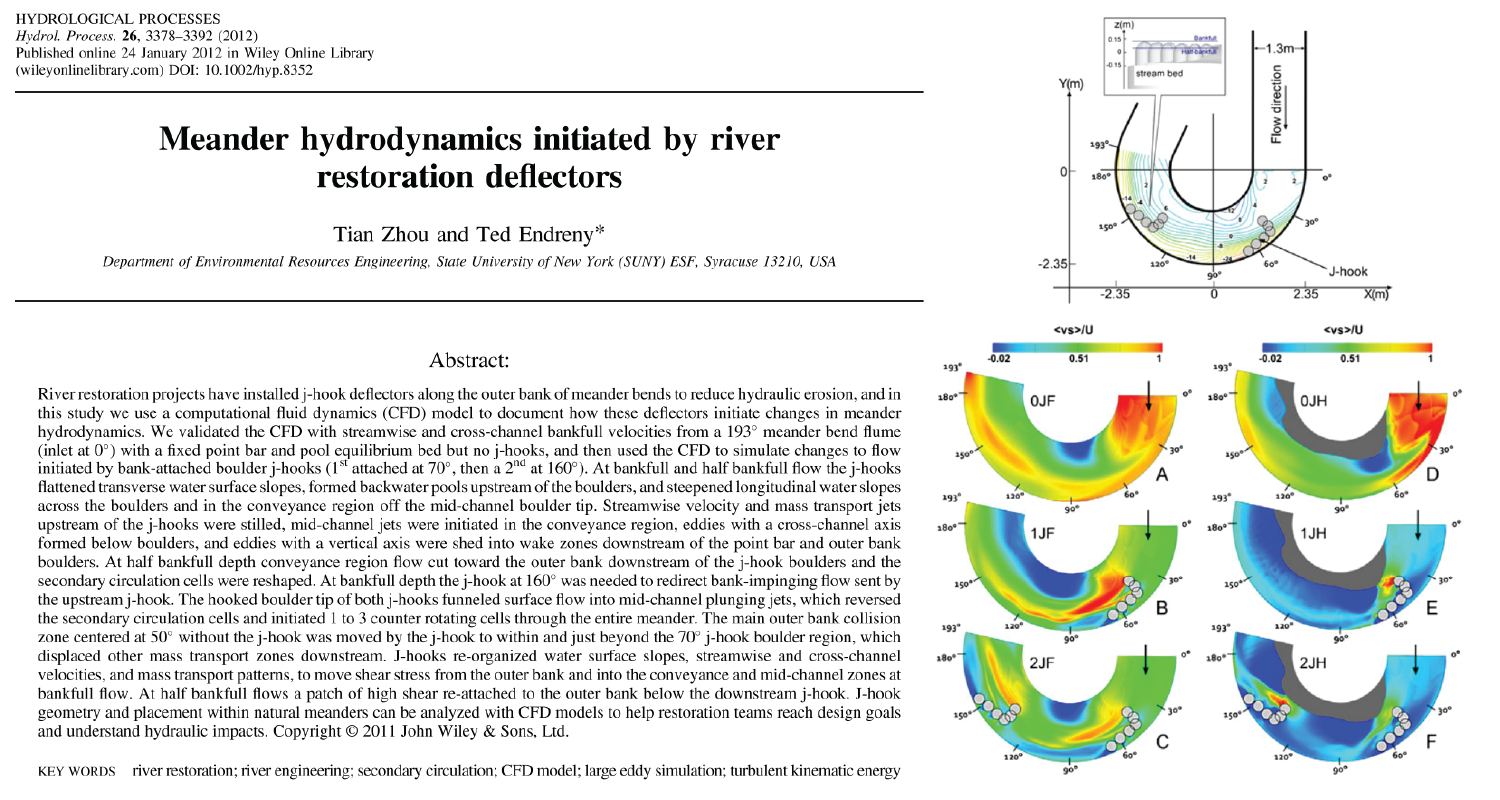 This paper quantified the hydrodynamic responses to the stream restoration structures under different flow conditions.
This paper quantified the hydrodynamic responses to the stream restoration structures under different flow conditions.
Zhou, T. and T. Endreny, 2012: Meander hydrodynamics initiated by river restoration deflectors. Hydrological Processes